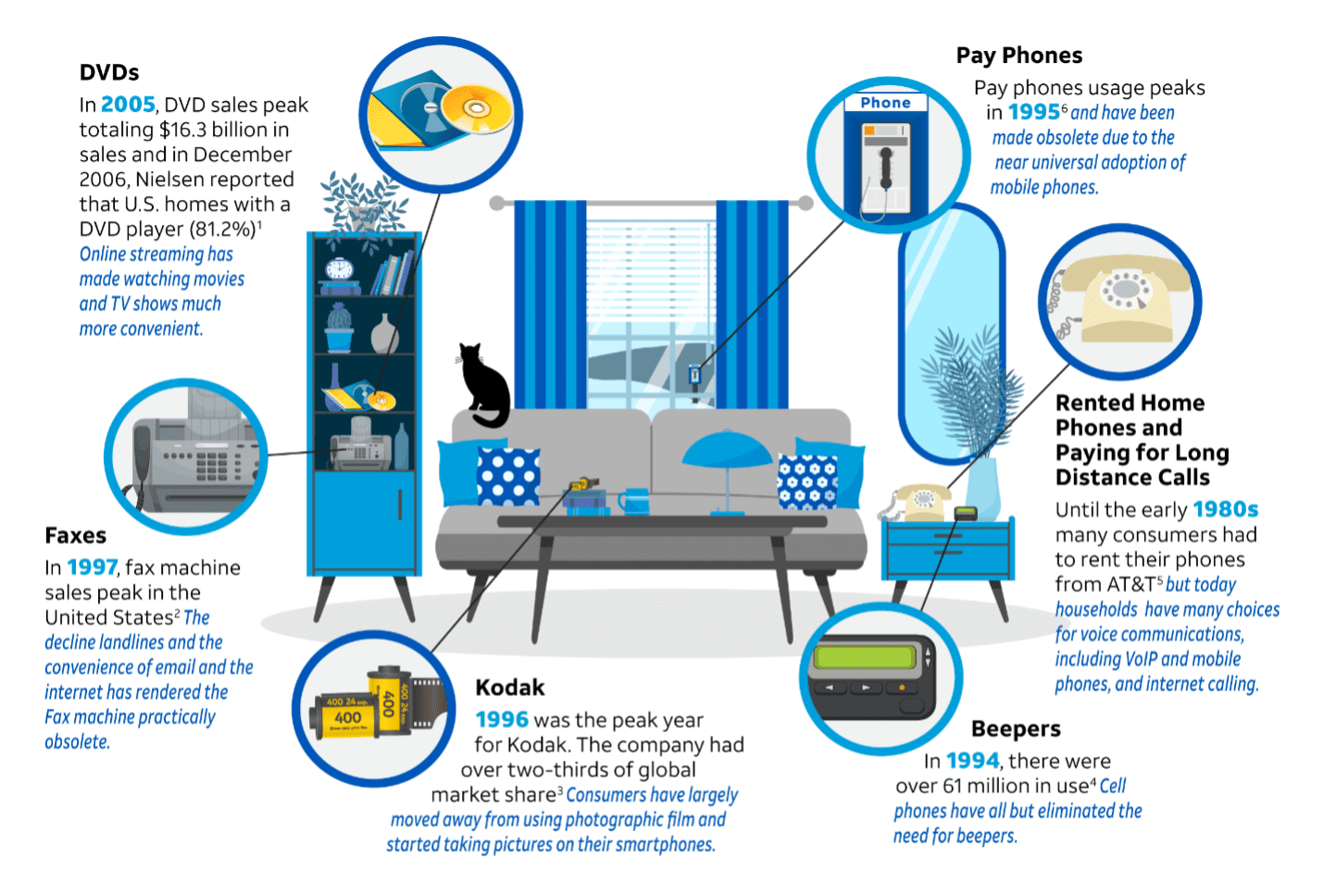Imagine a world where information wasn’t readily available at your fingertips. A world where if you’re sitting down to pay bills on your desktop computer, your telephone was rendered useless. It seems impossible today in our fast-paced digital age, but not long ago, this was reality.
Today, thanks to advancements in convenient and modern technology, we have the ability to work from anywhere, students can do homework and submit assignments online with a click of a button and telemedicine has made it easier for patients to get medical attention in remote or rural areas.
Today’s Tech: How We Got Here
These modern communications services would not be possible without the development and widespread adoption of high-speed fiber and wireless broadband networks. These networks have played a pivotal role in making once-popular technologies such as DVDs, fax machines, vintage printed photos, pay phones, beepers, and rented home phones obsolete – all because of the advancement of faster, better, and more efficient technology.

Just like these now obsolete technologies, copper lines that were once primarily responsible for delivering voice services can’t meet the demand of modern data. Consumers have by and large migrated away from these legacy services leaving copper networks underutilized while maintenance costs remain and, in some ways, increase with a dwindling number of users.
The common thread that ties the obsolescence of these technologies together is the rapid expansion of high-speed fiber and wireless broadband networks. California has been at the forefront of this digital revolution thanks to the expansive innovations coming from Silicon Valley. However, to ensure this transformation continues to benefit consumers and drive innovation, public policy must evolve and support continued investment in modern broadband network infrastructure. Without this policy evolution, California risks falling behind.
Modern broadband networks offer faster and more reliable connections, improving the overall internet experience for consumers. Whether it’s streaming high-definition content or engaging in video conferences, a robust broadband infrastructure is crucial.
Regulating with a Digital Future in Mind
Ensuring everyone can access modern broadband networks requires not only financial investments but also the support of forward-looking public policy. Unfortunately, the regulatory environment in some states, like California, is hindering these much-needed investments. Outdated regulations such as Carrier of Last Resort, or COLR, require providers to overlook the needs of the vast majority of consumers and prevent investments in modern networks. It’s worth noting Congress and many state legislatures have invested a historic number of resources towards high-speed broadband expansion in hard-to-serve areas; however, none of these programs are intended for preserving legacy voice services.
Today, public policies in California and states across the country should prioritize connecting as many households as possible and ensuring broadband access reaches underserved communities.
What’s more, robust broadband networks are critical for national security and resilience. They enable efficient communication during emergencies and support the development of secure digital infrastructure. An improved regulatory environment will encourage telecommunications investments in modern networks that offer reliable, high-speed connectivity, consumer protection and public safety.
The advent of high-speed fiber and wireless broadband networks has reshaped our lives and made once-commonplace technologies obsolete. California, with its tech-savvy culture, has been a frontrunner in this transformation. However, for the benefit of all its residents, California must continue to support public policies that encourage investment in modern broadband infrastructure. This will not only enhance the lives of consumers but also drive economic growth, foster innovation, and ensure that no one is left behind in the digital age. The future is digital, and the key to unlocking its potential lies in a fast and reliable broadband network.
1 Why Disney Is Cutting Back On DVDs After ‘Guardians Of The Galaxy’ (forbes.com) https://www.forbes.com/sites/bradadgate/2023/08/02/with-sales-dropping-disney-will-no-longer-sell-dvds-in-australia/?sh=88f3fd13b4b6
2 https://www.capitalmds.com/just-the-fax
3 https://www.photosecrets.com/the-rise-and-fall-of-kodak
4 When Was the Pager Invented? (thoughtco.com)
5 https://theconversation.com/rise-and-fall-of-the-landline-143-years-of-telephones-becoming-more-accessible-and-smart-113295
6 Payphones reached their peak in 1995 https://www.mcall.com/2001/03/18/pay-phones-reached-their-peak-in-95-slot-design-to-neighborhood-store-they-served-america-well/





